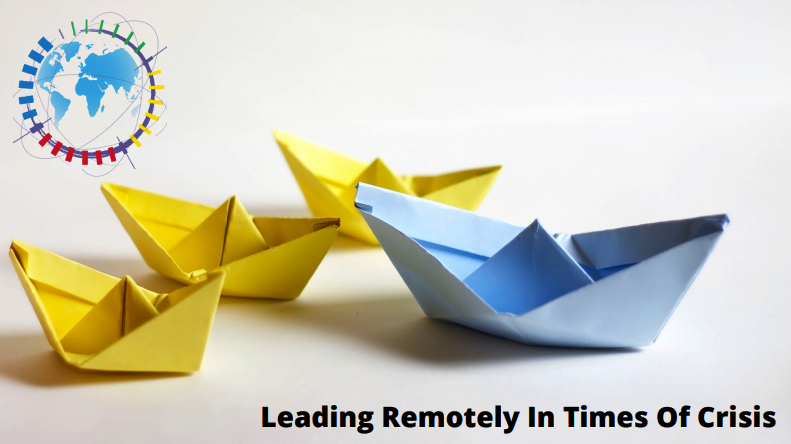Leading Remotely In Times Of Crisis
May 11, 2020

Times of Crisis
As the global pandemic has caused a worldwide crisis, each of us is faced with a lot of learning, some of which we had never considered before. Many people are now forced to work from home, which may be something they’ve never done. Yet leaders must continue to manage their teams and motivate them to be productive, even across great distances.
Organizations worldwide are implementing new systems to help their employees stay connected, but the onslaught of so many unfamiliar tools can be overwhelming. While each system is an effective medium for communicating in its own right, knowing which one to use and when can be difficult. And new communication tools are popping up rapidly, some of which require downloads, installations, and training – all without the assistance of a manager or tech support down the hall.
Leading a remote team means being more diligent and becoming highly aware of what each team member is experiencing. Leaders will benefit by taking three key steps as they help their teams navigate this new world.
Foster a Culture of Trust with Honest Communication
Yes, the work needs to be done, but it’s difficult to feel connected when everyone is remote. There are no water cooler or hallway discussions right now. Adding a few minutes of small talk to video conference meetings will help each person feel more connected.
Building new levels of connection is a crucial motivator for employee morale. Checking in with each team member a few times a week and striving to find commonality (besides working from home and the latest coronavirus news) will help to build new connections. Listen to how they’re doing and encourage them to talk honestly about this transition. Ask about the family. What new thing have they discovered about working from home? Is doing laundry while working a blessing or a curse? Talk, laugh, cry, empathize. Listening openly and mirroring back what each person relates (“what I hear you saying is…”) helps to build and maintain trust.
Team members also have a responsibility to speak up for themselves and communicate how they feel, good and bad, and what works for them – or doesn’t work. Clearly establish that there are no repercussions for talking honestly about their successes as well as their struggles. Trust is predicated on a team culture that says feedback is not criticism.
Create Norms and Expectations Around Tech Platforms
The onslaught of new systems to keep us connected can be overwhelming. Which ones take priority? Establishing parameters around each platform will help workers understand how each system should be used, what systems are mandatory and when, and what programs are optional.
- Is the team starting to text each other on their cell phones to ask a quick question? “We haven’t done that before, so let’s not start now; we can continue to use email or our instant chat system.”
- Are multiple chat systems being used? “Which one works best for each of you? Let’s select one that will fit our needs and stick to that.”
- Are some people taking meetings offline and trying to get buy-in via email, by copying everyone? “Let’s schedule some conference calls to discuss this in more depth and allow everyone to hear each person’s thought process.”
- Are some employees more afraid of being on-camera than they are of the virus? “We’ll only have Mary on-camera for one meeting a week.”
A leader has a responsibility to help the teamwork in their best way, and spending time to motivate the team is more important than ever in a remote environment. Hearing and empathizing with each person’s comfort level in ways that haven’t been considered previously – and adapting accordingly – are critical to helping each person feel comfortable and remain productive.
Adapt – Reiterate – Evolve
If your organization hasn’t used remote working in the past, the initial time where everyone accesses systems remotely may cause some frustration and learning pains. It’s important to remember that teams everywhere are experiencing trial and error, just like you are. Patience and a sense of humor are important here!
Communicating an expectation of volatility can provide comfort to employees who are new to remote working. They’re adapting and so is everyone else; it’s not going to be perfect. Acknowledging that everyone is transitioning will reiterate that “we’re all in this together.” Try to maintain an inclusive workplace by communicating a commitment to finding systems and processes that work for everyone.
Conclusion
Fortunately, there are many options for communicating and if one isn’t working then it’s on to the next. With the honest feedback of the team, you may learn that some methods are working better than others. It’s time to evolve to a new system or method. While researching a better option may take a bit of time, the long-term effectiveness is worth it. Yes, this means more changes but the next system or meeting time could create exactly what’s needed for everyone to perform at their best. And that’s what everyone wants, isn’t it?


